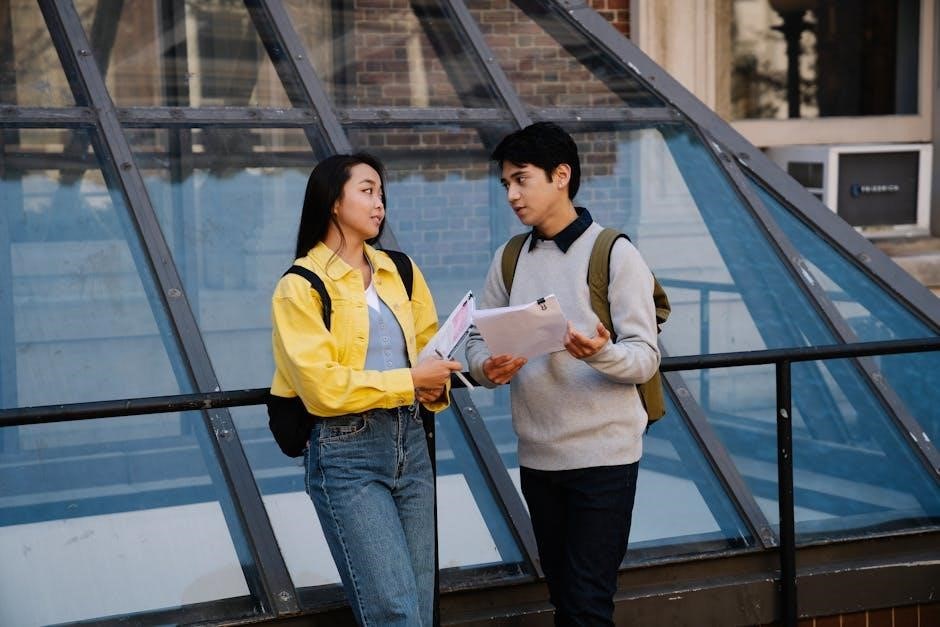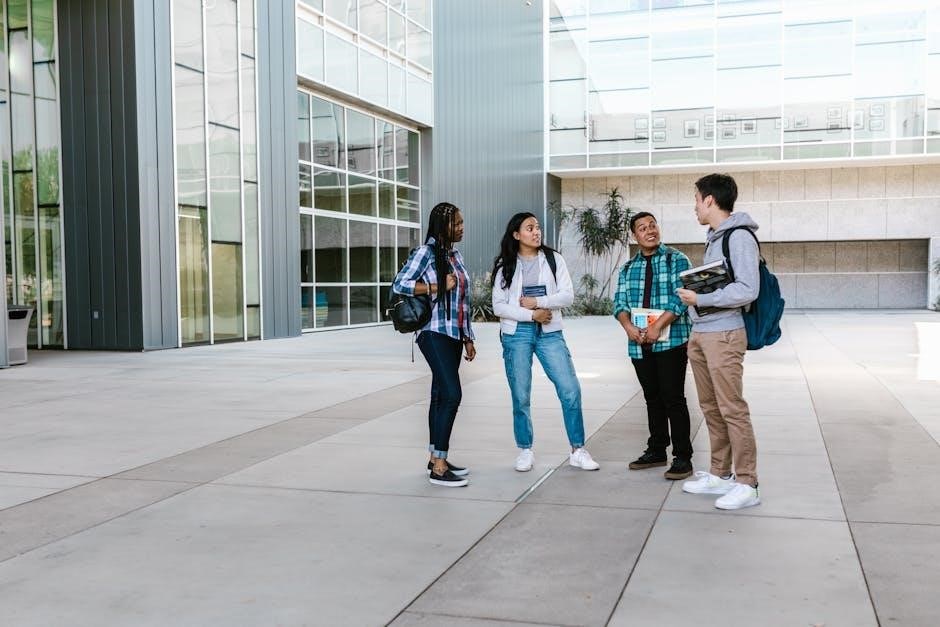Dora’s Backpack is a magical tool that aids Dora in her adventures, containing essential items and a talking guide that helps navigate challenges and solve problems.
1.1 Overview of Dora’s Backpack
Dora’s Backpack is a magical and essential tool that accompanies Dora on her adventures, serving as more than just a container for items. It is a symbol of exploration and learning, often containing everything needed to overcome obstacles. The backpack’s ability to hold an infinite number of items, regardless of size, makes it a unique and versatile companion. Its bright color and cheerful design capture the spirit of adventure, while its magical properties ensure that it always has the right item at the right time. The backpack’s role extends beyond practicality, as it also represents curiosity and the joy of discovery.
The backpack’s design is simple yet iconic, with a recognizable shape that has become synonymous with Dora’s adventures. It is lightweight yet durable, allowing Dora to carry it effortlessly across various terrains. Inside, the backpack is surprisingly spacious, able to accommodate everything from maps and flashlights to snacks and tools. Its magical nature ensures that items are always accessible, making it an indispensable resource for Dora and her friends. Over time, the backpack has become a beloved character in its own right, embodying the show’s themes of exploration and problem-solving.
The backpack also reflects the cultural and educational aspects of Dora’s adventures, often containing items that relate to the episode’s theme. For example, it might hold traditional clothing, local foods, or cultural artifacts, helping to teach children about different traditions. This adaptability makes the backpack a dynamic and engaging element of the show. Its ability to “talk” and provide guidance further enhances its role as a trusted companion, offering encouragement and advice to both Dora and the audience.
1.2 Importance of the Talking Guide
The talking guide in Dora’s Backpack plays a pivotal role in her adventures, serving as a trusted companion that aids in navigation and problem-solving. Its ability to communicate and provide essential information makes it indispensable, helping Dora overcome obstacles and find solutions. The guide’s interactive nature encourages audience participation, fostering engagement and learning. By offering translations and cultural insights, it bridges language gaps and promotes diversity. The talking guide also enhances the educational value of the show by teaching Spanish and introducing kids to new concepts. Its presence transforms the backpack from a simple tool into a dynamic, intelligent assistant, enriching Dora’s journey and the viewer’s experience.

Evolution of Dora’s Backpack
Dora’s Backpack has evolved from a simple prop to a dynamic, interactive tool, incorporating the talking guide to enhance problem-solving and cultural exploration in adventures.
2.1 EarlyVersions of the Backpack
2.1 Early Versions of the Backpack
The first versions of Dora’s Backpack were simple and lacked the advanced features seen today. Initially introduced as a practical tool for carrying essentials like maps, snacks, and tools, it gradually evolved to include a talking guide. This guide was a groundbreaking addition, offering verbal assistance and cultural insights. The early versions laid the foundation for the interactive and educational elements that became central to the show. Over time, the backpack’s design and functionality were refined to enhance storytelling and child engagement, making it an iconic symbol of adventure and learning.

2.2 Modern Enhancements
The modern versions of Dora’s Backpack have undergone significant upgrades, integrating advanced technology to enhance its functionality. The talking guide now features AI-driven interactions, allowing it to adapt to different situations and provide real-time assistance. It also includes multilingual support, enabling children to learn and engage in multiple languages. Additionally, the backpack now has interactive problem-solving tools, such as puzzles and quizzes, to stimulate critical thinking. These enhancements make the backpack more engaging and educational, ensuring it remains a vital companion for Dora’s adventures. The modern updates reflect a commitment to innovation, keeping the backpack relevant in today’s tech-savvy world.
2.3 Cultural Relevance Over Time
The talking guide in Dora’s Backpack has maintained its cultural relevance by incorporating diverse traditions and languages, reflecting global diversity. Over the years, it has adapted to include multilingual support, allowing children from different backgrounds to engage with the content. The guide’s ability to connect with various cultures has made it a beloved tool for teaching cultural awareness. By featuring stories and phrases from around the world, it fosters inclusivity and appreciation for different traditions. This adaptability ensures the talking guide remains a timeless and universal educational companion, resonating with audiences across generations and geographies. Its cultural sensitivity has been key to its enduring popularity.

Features of the Talking Guide
The talking guide is an interactive educational tool designed to assist Dora and young explorers. It offers language translation, problem-solving tips, and engaging activities to enhance learning adventures.
3.1 Language Translation Capabilities
The talking guide’s language translation feature is a cornerstone of its functionality, enabling Dora to communicate with friends and solve puzzles in multiple languages. This tool bridges linguistic gaps, fostering global understanding. It supports Spanish and English, with potential for other languages, making adventures accessible worldwide. The guide’s real-time translations aid young learners in picking up new words and phrases, enhancing their bilingual skills. This feature not only facilitates gameplay but also teaches cultural exchange and diversity. By breaking language barriers, the talking guide enriches Dora’s journeys and educates children about the importance of communication across cultures.
3.2 Interactive Learning Tools
The talking guide in Dora’s backpack features interactive learning tools designed to engage children actively. These tools include singing songs, dancing, and encouraging audience participation, which helps kids learn through fun and repetition. The guide often poses questions, riddles, and memory games, prompting children to think critically and solve problems. By interacting with the guide, kids develop essential skills like hand-eye coordination, language recognition, and cognitive abilities. These tools also foster creativity, encouraging children to express themselves and explore their imagination. The combination of entertainment and education makes the talking guide an invaluable resource for young learners, enhancing their overall developmental journey.
3.3 Problem-Solving Assistance
The talking guide in Dora’s backpack offers problem-solving assistance, helping Dora and her friends overcome obstacles during their adventures. It provides clues, riddles, and memory games that encourage critical thinking and teamwork. The guide often breaks down complex tasks into simpler steps, making it easier for children to understand and participate. With its interactive approach, the guide teaches kids to analyze situations, make decisions, and find creative solutions. This feature not only aids in completing missions but also enhances cognitive development by fostering logical reasoning and confidence in young learners. The guide’s assistance is tailored to engage children while equipping them with essential problem-solving skills.

Educational Impact of the Talking Guide
The talking guide enhances learning by teaching Spanish, encouraging critical thinking, and fostering cultural awareness, making it a valuable educational tool for young audiences.
4.1 Teaching Spanish to Children
The talking guide in Dora’s backpack plays a pivotal role in teaching Spanish to children through interactive dialogue and repetition. By incorporating simple phrases and vocabulary, it helps kids grasp the basics of the language in a fun and engaging manner. The guide’s ability to translate words and phrases makes it an effective tool for bilingual learning. This feature not only enhances language skills but also promotes cultural understanding, encouraging children to explore and appreciate diversity. The guide’s interactive nature ensures that learning Spanish is both enjoyable and accessible for young audiences. This approach fosters a love for language learning from an early age.
4.2 Encouraging Critical Thinking
The talking guide in Dora’s backpack fosters critical thinking by presenting children with problems to solve and challenges to overcome. Through interactive questions and puzzles, it encourages kids to think analytically and make decisions. The guide’s ability to provide feedback and hints helps children evaluate their choices and learn from mistakes. This feature promotes logical reasoning and problem-solving skills, essential for cognitive development. By engaging children in active thinking, the talking guide transforms passive viewing into an interactive learning experience, preparing them to tackle real-world challenges with confidence and creativity. This approach makes learning fun while sharpening their critical thinking abilities.
4.3 Promoting Cultural Awareness
The talking guide in Dora’s backpack plays a significant role in fostering cultural awareness by introducing children to diverse traditions, languages, and customs. Through its bilingual interface, it teaches basic Spanish phrases, helping kids connect with Latin American culture. The guide also highlights festivals, music, and cultural practices, making learning engaging and relatable. By encouraging exploration of different cultures, it promotes empathy and understanding. This exposure helps children develop an appreciation for global diversity, preparing them to interact with people from various backgrounds. The guide’s inclusive approach ensures that cultural education is both fun and meaningful, shaping young minds to embrace cultural differences.

Role of the Backpack in Adventures
The backpack, with its talking guide, is essential for navigating challenges, storing vital items, and communicating with Dora, ensuring successful adventures and problem-solving in every journey.
5.1 Navigating Through Challenges
The talking guide in Dora’s backpack plays a crucial role in navigating through challenges by providing real-time translations, cultural insights, and problem-solving strategies. It helps Dora and her friends overcome obstacles by offering clear directions and explanations, ensuring they stay on track during their adventures. The guide’s ability to break down complex tasks into simpler steps makes it easier for young audiences to follow along and engage actively. Additionally, its interactive features, such as riddles and puzzles, encourage critical thinking and creativity, turning challenges into fun learning opportunities. This makes the talking guide an indispensable companion for Dora, transforming every challenge into a manageable and exciting experience.
5.2 Storing Essential Items
Dora’s Backpack is uniquely designed to store a variety of essential items needed for adventures, from maps and snacks to tools and gadgets. The talking guide ensures that every item is neatly organized and easily accessible, preventing clutter and saving time. This magical storage system allows Dora to quickly retrieve whatever she needs, whether it’s a compass for navigation or a first-aid kit for emergencies. The Backpack’s ability to hold an endless array of items, regardless of size, is a testament to its enchantment. This feature not only aids Dora but also teaches children the importance of preparation and organization in achieving their goals.
5.3 Communicating with Dora
The talking guide in Dora’s Backpack plays a vital role in facilitating communication between Dora and her audience. It often prompts viewers to participate by asking for their help, creating an interactive experience that makes children feel involved. This feature encourages kids to engage verbally, fostering language development and teamwork. Additionally, the guide assists Dora in communicating with her companions, such as Boots, by translating and interpreting their needs. Its ability to converse in multiple languages also helps bridge cultural gaps, making it an essential tool for global understanding. This interactive element ensures that Dora’s adventures are both educational and entertaining for young learners.

Cultural Significance of the Talking Guide
The talking guide in Dora’s Backpack symbolizes cultural exchange and understanding, offering language translations and insights into diverse traditions, making it a tool for global education and unity.
6.1 Representation in Media
The talking guide in Dora’s Backpack is a unique character in children’s media, symbolizing friendship and support. It breaks language barriers, promoting diversity and inclusivity, and serves as a trusted companion, encouraging young audiences to explore different cultures. By integrating Spanish language learning and cultural elements, the guide fosters global understanding. Its role in the show highlights the importance of collaboration and teamwork, making it a memorable and impactful character. The guide’s presence ensures that Dora’s adventures are educational and engaging, while its cultural relevance resonates with a diverse audience, making it a cornerstone of the series’ success and appeal.
6.2 Impact on Global Audiences
The talking guide in Dora’s Backpack has had a profound impact on global audiences, particularly children, by fostering language learning and cultural awareness. Its ability to translate languages and provide guidance has made it a beloved tool for kids worldwide. The guide’s interactive nature encourages young viewers to engage with diverse cultures, promoting inclusivity and curiosity. By incorporating Spanish language elements, it has also helped non-Spanish speakers learn basic phrases, bridging cultural gaps. This exposure to multilingualism and global perspectives has made the show accessible and educational for a diverse audience, ensuring its popularity across different countries and languages.
6.3 Symbolism of Friendship and Support
The talking guide in Dora’s Backpack symbolizes friendship and support, acting as a trusted companion on adventures. It consistently provides encouragement and essential information, embodying the idea of a loyal friend. The guide’s ability to communicate in multiple languages also represents unity and inclusivity, showing that support transcends barriers. By offering problem-solving assistance, it teaches children the value of teamwork and collaboration. The guide’s presence reinforces the importance of having supportive friends, making it a heartwarming symbol of friendship and reliability. This aspect of the talking guide resonates deeply with young audiences, fostering emotional connections and a sense of security during Dora’s adventures.
Interactive Elements for Kids
The talking guide engages children with singing, dancing, and audience participation, encouraging active involvement in Dora’s adventures and making learning an enjoyable experience for young viewers.
7.1 Singing and Dancing Features
The talking guide in Dora’s Backpack features lively singing and dancing elements, making adventures engaging for kids. Songs like the “Backpack Song” teach Spanish vocabulary and problem-solving skills. Dancing encourages physical participation, fostering creativity and joy in learning. These features create an interactive environment, blending education with entertainment. By integrating music and movement, the guide helps children stay focused and excited about Dora’s journeys, turning every adventure into a fun, educational experience. This approach ensures young viewers are actively involved, making learning feel like play. The combination of singing and dancing reinforces the guide’s role as a friendly, interactive companion for kids.
7.2 Encouraging Audience Participation
The talking guide in Dora’s Backpack actively encourages audience participation through interactive prompts and engaging phrases like “¡Vámonos!” This fosters a sense of involvement, making kids feel like they’re part of the adventure. The guide often asks for help solving puzzles or identifying objects, teaching children to contribute and communicate effectively. Its ability to translate languages and explain cultural elements further enhances interaction, making it accessible to diverse audiences. By prompting kids to shout answers or repeat phrases, the guide creates a dynamic learning environment where participation is both fun and educational. This interactivity helps children develop confidence and critical thinking skills while feeling connected to Dora’s journeys.
7.3 Enhancing Learning Through Fun
The talking guide in Dora’s Backpack seamlessly blends learning with entertainment, making education enjoyable for children. By incorporating songs, dances, and engaging activities, the guide captures young audiences’ attention and maintains their interest. Interactive elements like language translation games and problem-solving challenges are presented in a playful manner, encouraging kids to participate actively. This approach not only enhances memory retention but also fosters a positive association with learning. The guide’s upbeat tone and celebratory responses, such as “¡Excelente!” when tasks are completed, motivate children to continue exploring and acquiring new skills. This combination of fun and education ensures that learning feels like an adventure, keeping children excited and eager to engage.

Behind the Scenes of the Talking Guide
The talking guide is brought to life by skilled voice actors, designers, and engineers who collaborate to create its interactive and educational features.
8.1 Voice Acting and Development
The talking guide is brought to life by talented voice actors who carefully craft its tone and personality to engage young audiences. Development involves close collaboration with educators to ensure the guide’s dialogue aligns with learning objectives. Scripts are refined to balance fun and education, with voice recordings tailored to match Dora’s adventures. The voice actors’ ability to convey empathy and encouragement makes the guide relatable and supportive. This process ensures the guide not only assists in problem-solving but also fosters a love for learning in children, making it a cherished companion in every adventure and a key part of the show’s legacy.
8.2 Design Process and Technology
The talking guide in Dora’s Backpack was meticulously designed using cutting-edge animation and voice-recognition technology to create an interactive learning companion. The design process involved blending vibrant visuals with intuitive user interfaces, ensuring it was both fun and functional for young audiences. Engineers and animators collaborated to bring the guide to life, integrating it seamlessly with the backpack’s magical features. Advanced sound effects and responsive animations were incorporated to make the guide engaging and relatable. This innovative design ensures the guide is not only a helpful tool but also a beloved character that enhances Dora’s adventures and the learning experience for children.
8.3 Collaborations and Creators
The creation of the talking guide involved a collaborative effort between writers, animators, and voice actors to ensure its educational and entertaining value. Natasha Lance Rogoff, known for her work on Muppets in Moscow, contributed to its cultural relevance, while other creators focused on making it interactive and engaging. The guide’s development was a teamwork effort, blending storytelling with innovative design to enhance Dora’s adventures. These collaborations not only shaped the guide but also helped establish Dora’s Backpack as an iconic educational tool, inspiring learning and exploration for children worldwide. The creators’ dedication ensured the guide remains a memorable and impactful character in the series.

Legacy of the Talking Guide
The Talking Guide’s legacy lies in its influence on children’s education through interactive learning and memorable adventures, making it an iconic tool in Dora’s Backpack.
9.1 Influence on Children’s Education
The Talking Guide in Dora’s Backpack has significantly impacted children’s education by providing interactive and engaging learning experiences. It encourages language development, problem-solving, and cultural awareness through its bilingual interface and real-time assistance. By making learning fun and accessible, the guide has helped children develop essential skills while fostering curiosity and confidence. Its ability to adapt to different educational needs has made it a valuable tool for early childhood development, proving that education can be both entertaining and effective. The guide’s influence extends beyond the show, inspiring similar educational innovations and leaving a lasting impact on how children learn and interact with technology.
9.2 Inspiring Future Innovations
The Talking Guide in Dora’s Backpack has inspired future innovations in children’s education and entertainment. Its interactive and bilingual design has influenced the development of educational technologies, such as AI-powered learning tools and voice-activated toys. The guide’s ability to engage children through problem-solving and language translation has set a precedent for modern ed-tech advancements. By blending entertainment with education, it has encouraged creators to craft more immersive and accessible learning experiences. This legacy continues to shape how technology is integrated into childhood development, ensuring that future innovations remain both fun and educational for children worldwide. The guide’s impact is a testament to its enduring influence on creative learning solutions.
9.3 Memorable Moments in the Show
The Talking Guide in Dora’s Backpack has been central to numerous unforgettable moments in the series. One such instance is when the guide helped Dora and Boots navigate through a maze in the “Forest of Numbers,” providing crucial directions and translations that led them to the hidden treasure. Another memorable episode featured the guide teaching Swiper how to say “por favor” in Spanish, emphasizing the importance of politeness and language learning. These moments not only showcased the guide’s functionality but also highlighted its role in fostering inclusivity and education. The guide’s interactions have become iconic, making it a beloved element of the show’s legacy.

Future of the Talking Guide
The Talking Guide may integrate AI for smarter interactions, offering personalized learning and AR features to enhance Dora’s adventures, making education more immersive and engaging for children globally.
10.1 Potential Upgrades and Innovations
The Talking Guide could incorporate advanced AI to offer personalized learning experiences, adapting to a child’s progress. AR features might bring Dora’s world to life, blending the digital with the physical. Enhanced language translation capabilities could include more dialects, fostering global understanding. Interactive tools might predict and address learning gaps, ensuring every child stays on track. Integration with wearable technology could allow the guide to be more accessible during adventures. These upgrades would not only keep the guide relevant but also deepen its educational impact, inspiring the next generation of explorers and learners in an ever-evolving world.
10.2 Expanding Its Role in Education
The Talking Guide could expand its educational role by integrating with school curricula, offering lessons aligned with academic standards. It might partner with educators to create classroom activities, bridging home and school learning. By incorporating real-world problems, it could teach critical thinking and cultural awareness more effectively. The guide could also serve as a tool for special needs children, providing tailored support. Collaborations with educational apps could enhance its reach, making learning interactive and accessible to a broader audience. This expansion would solidify the guide’s position as a versatile and invaluable educational resource for children worldwide.
10.3 Adapting to New Technologies
As technology evolves, the Talking Guide could incorporate advanced features like augmented reality (AR) and virtual reality (VR) to create immersive learning experiences. By integrating voice recognition and AI, it could offer personalized learning paths tailored to individual children’s needs. The guide might also adapt to smart home devices, enabling seamless interaction with other educational tools. These advancements would ensure the Talking Guide remains relevant and engaging for future generations, while maintaining its core mission of fostering learning and exploration. Leveraging new technologies would allow it to connect with children in innovative ways, making education more accessible and fun. This adaptation is crucial for its longevity.
